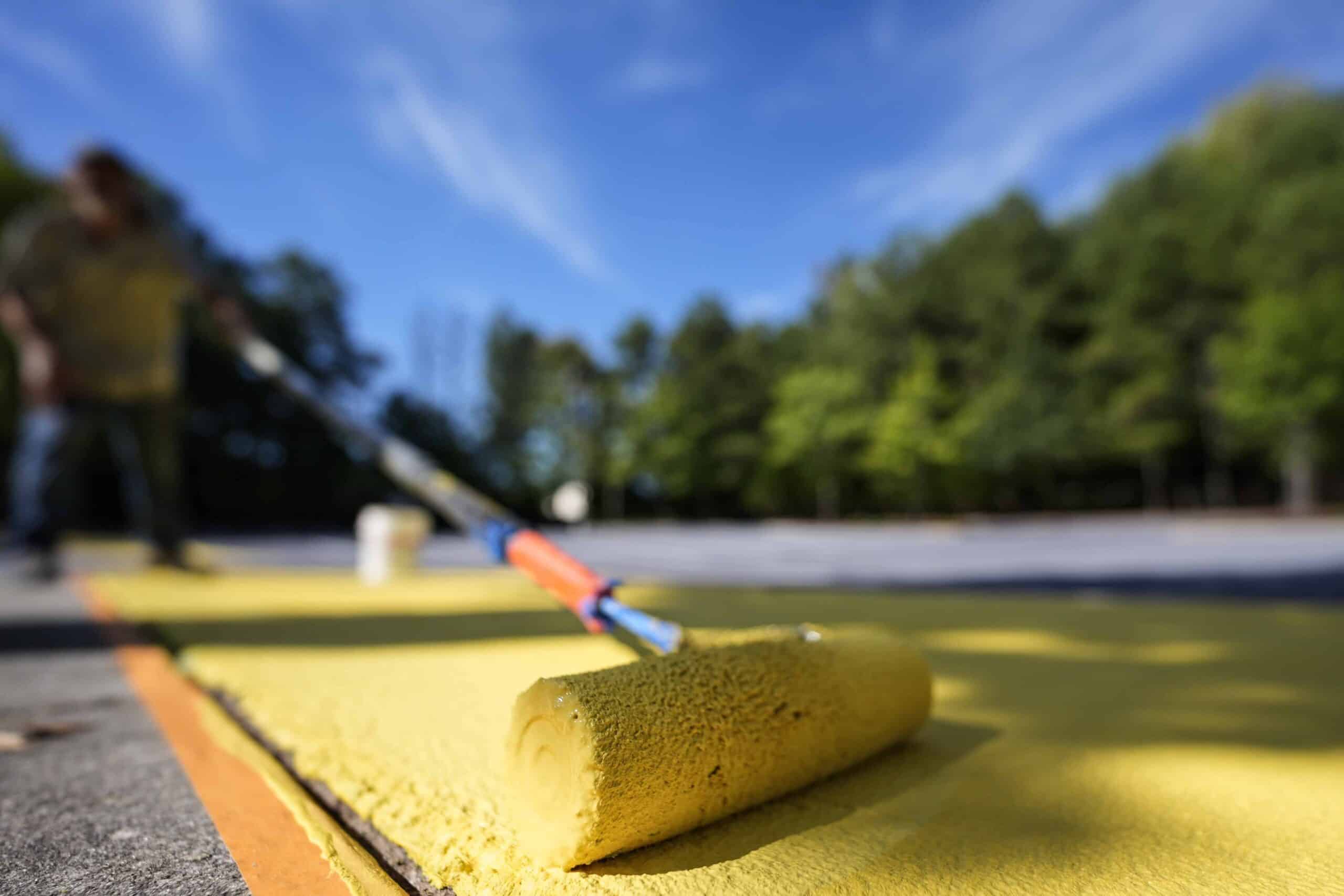
Ronnie Jefferies paints the parking zone at Science, Arts and Entrepreneurship Faculty to assist cool it by making it extra reflective, Wednesday, Sept. 4, 2024, in Mableton, Ga. (AP Photograph/Mike Stewart)
Ylenia Aguilar raised her sons in Arizona, so that they’re no strangers to scorching warmth.
She remembers “seeing soccer youngsters and my very own youngsters move out and faint from, you recognize, heat-related sicknesses,” she stated. “It was seeing my sons dehydrated.”
Faculties throughout the U.S. are carpeted in heat-absorbing asphalt and lack shade. The buildings have been typically made with supplies that radiated warmth into indoor areas. Children are extra weak to warmth sickness than adults, and excessive temperatures have an effect on studying, efficiency and focus. Warmth-related college closures have gotten extra frequent.
The burden of utmost warmth will not be felt equally. Low-income neighborhoods and communities of shade may be as a lot as 7 F (3.9 C) hotter than richer and whiter neighborhoods.
But there are well-known methods to chill down faculties and neighborhoods.
Article continues after this commercial
Cool floor surfaces
In 2022, college students at a college close to Atlanta pointed thermometers onto their basketball court docket and received a studying of 105 F (about 40.5 C). A roofing producer donated a solar-reflective coating and helped them paint it on. They took one other studying. This time it was 95 F (35 C).
Article continues after this commercial
Paved surfaces get actually sizzling within the solar. They take up photo voltaic vitality and slowly re-radiate it out as warmth, rising air temperatures by as a lot as 7 F (3.9 C).
Cooling playgrounds and roads by making them extra reflective will not be new, however curiosity has been rising together with extra understanding of the way in which the buildup can have an effect on neighborhoods, referred to as city warmth islands, stated Daniel Metzger, a fellow at Columbia Legislation Faculty.
The Science, Arts and Entrepreneurship Faculty not too long ago had that very same cool floor painted on their parking zone. Each instances, the coatings and labor have been donated. With out that, the varsity would have needed to elevate funds, stated Scott Starowicz, the varsity’s co-founder and chief monetary officer.
Cool roofs and window movies
East of Los Angeles, roofs throughout the Chaffey Joint Union Excessive Faculty District as soon as reached 140 F (60 C).
Heat roofs imply upper-floor lecture rooms might get sizzling, which might have an effect on a variety of Chaffey’s college students, practically 65% of who’re Latino or Hispanic.
Chaffey has spent $11.4 million in bond cash and upkeep funds to transform asphalt shingle roofs to white cool roofing since 2017.
These roofs — in addition to window movies, paints and different applied sciences — mirror a part of the incoming photo voltaic radiation away from a constructing, fairly than permitting it to switch inside as warmth.
These are a few of the best and least pricey actions a district can take.
Consultants agree cool roofing lowers indoor temperature and reduces the necessity for AC.
The district has additionally invested in metal shade constructions, bushes and temperature units to watch warmth stress.
Cooler, greener schoolyards
On sizzling days, Sharon Gamson Danks remembers seeing her youngsters and their friends sitting within the shade alongside the perimeters of their college constructing.
Extra faculties are tearing out sizzling asphalt, turf or rubber mats in favor of grass, gardens, mulch or bushes. Consultants say bushes are probably the greatest methods to chill issues down.
At Parkway Elementary in Sacramento, bushes changed turf this summer season due to a grant. The mission is a part of a California schoolyard forests effort to extend tree cover in public faculties, particularly in underserved communities.
Paying for the wanted adjustments
For the most well liked faculties, these options are sometimes out of attain.
Federal businesses supply grants, however they typically don’t cowl the total value, and faculties typically don’t have the employees to use for and handle grants. Elevated upkeep prices are additionally a priority.
Counting on grant cash “can fully exacerbate the haves and the have-nots” relating to lowering local weather change and adapting to its harms, stated UCLA professor V. Kelly Turner.
Many consider faculties shouldn’t be left on their very own. Each particular person answer makes a distinction, stated Greg Kats of the Sensible Surfaces Coalition. However combining efforts with an area authorities or neighborhood means faculties may be much more comfy, he stated.
“It’s simply form of integration, proper, of various methods over a bigger geographic space,” he added. “You’re actually form of reworking the varsity setting.”
In Phoenix, Aguilar’s efforts improved Osborn Elementary District, however the work is ongoing. It not too long ago received cash to plant extra bushes and add extra shade.
Aguilar understood that it will solely get hotter, she stated. “I knew that we would have liked to take motion.”


